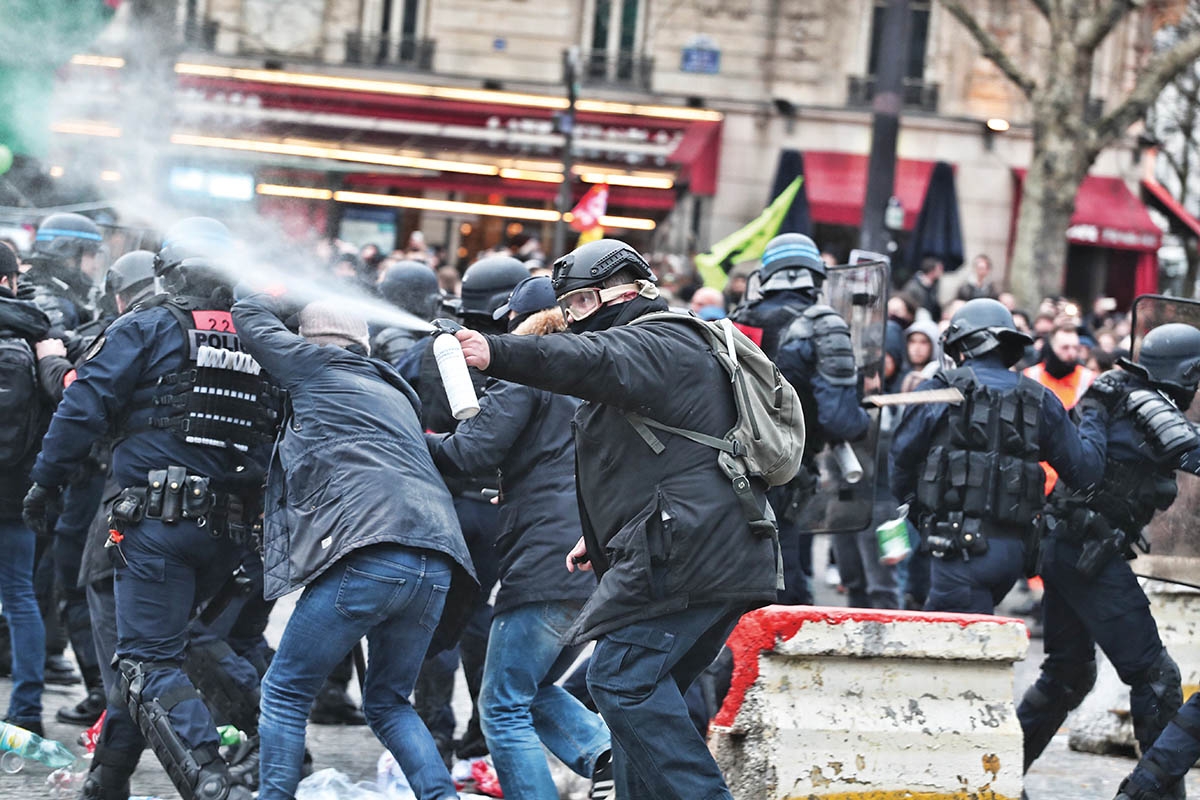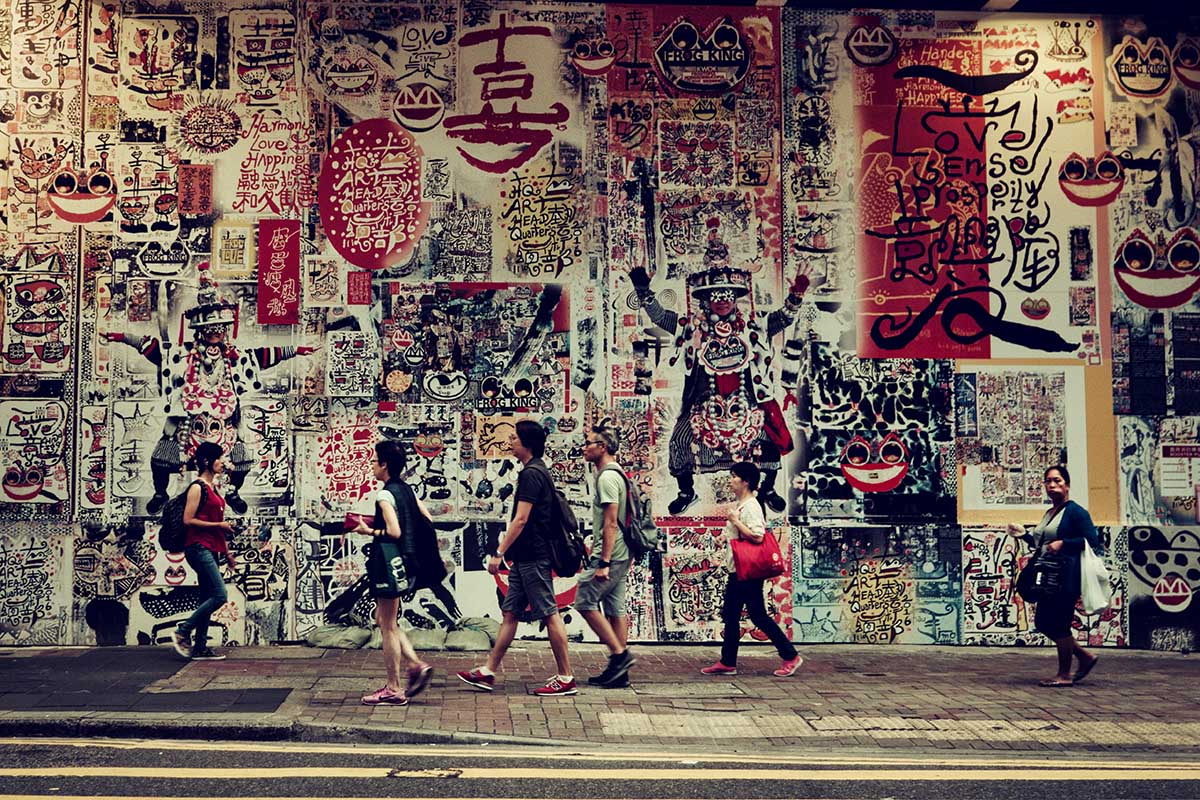Before the dawn of the internet age, reportage-style photography was the preserve of print media in newspapers and magazines. Photo stories that documented an issue in depth found their platform in the pages of the great 20th century international weekly titles such as Picture Post, Life, Newsweek and Stern, as well as newspaper Sunday supplements.
Today, publication online is the primary focus for press and reportage photography, but with a greater emphasis on the moving image. There are commercial reasons for doing this, as Matthew Horwood, former staff photographer on the South Wales Echo and Western Mail explains: ‘It’s video which is in demand more because the publisher can put an advert into the content and know that if they get a certain number of hits they will get a specific amount of revenue. It seems to be viral video that’s really successful and it’s usually hard to come by.’
Whether viral or not, video stories are an important addition to the press photographer’s repertoire and many of today’s cameras are equipped with 4K video capability as standard. Photographers can now change from stills to video recording at the flick of a switch and use the camera’s built-in microphone or a larger attachment for professional quality sound recording.
Increasingly, photographers are becoming one man bands, shooting both stills and video, then editing to produce story packages of varying lengths for online viewing. This scaled down way of working means documentary and reportage stories are also within the reach of many more amateur photographers and film makers.
CITIZEN JOURNALISTS
With the launch of the Apple iPhone in 2007, subsequent generations of smart phones have made photography far more accessible. Nowadays, it seems that everyone has a camera in their pocket and a means to immediately upload images to social media pages or other Web-based platforms with a worldwide audience. Such is photography’s omnipresent reach in our day-to-day life that many media commentators, news editors and film producers have concluded that, ‘everyone is a photographer now’.
Furthermore, smart phones have given the public the means to provide news channels with images to illustrate everything from the daily weather to on-the-spot footage from major crime scenes and events. In effect, anyone with a camera phone who is in the right place at the right time has the potential to capture an image of a major event that is then seen by millions worldwide.
It was the London terrorist bombings of 2005, when witnesses provided much of the imagery and footage for daily newspapers, websites and TV broadcasts all over the world, that changed the nature of reportage-style and news photography. This attack on a hot day in July is now regarded as the date when photos and video shot by the public ‘went mainstream’ and content provided by these ‘citizen journalists’ was deemed acceptable to major media networks. It is a fact not lost on today’s surviving band of press photographers.

‘There is no way to compete with a person on the scene of an incident with a decent mobile phone camera and the ability to use it effectively,’ says Mike Swift, chief photographer for Newsquest Berkshire. Swift cites the public’s mobile phone footage of the London bombings as the event that changed the media’s perception of mobile phone imagery. He says: ‘The shocking shots of the bus opened up by the bomb, all of which made the front pages of national dailies, could not be beaten by full-time, paid staff photographers turning up with thousands of pounds of professional kit half an hour after the incident.’
CHANGING BEHAVIOUR
It’s a view shared by Simon Dack, former chief photographer of the Brighton Argus, who also detects a significant change in the way the public responds to major incident, even one potentially dangerous to themselves. No longer, he says, do people run for cover; instead they stand their ground and get out their phone. ‘It’s a strange world,’ says Dack, ‘but the first thing members of the public do now is take pictures, that seems to be the first thing that goes through their heads these days.’
In newspaper parlance, images supplied by the public are called ‘send-ins’ and most local papers now rely upon these for their news coverage. But press photographers use smart phones too – for good reason. Swift, says: ‘It is a powerful tool in the hands of a professional photographer and can be used to speed up processes and even slipped discreetly into events and meetings.’
Matthew Horwood agrees: ‘I remember on one occasion walking through Cardiff on a particularly windy day with a DSLR over each shoulder and an iPhone in my hand. I turned the corner and a council signpost blew over and hit some poor guy on the head. I took the picture with my iPhone as it was literally the camera I had in my hand at the time.’
It used to be that the amateur photographer would try to emulate the paid professional by saving up for the same equipment or responding to the changing trends and styles adopted by press and documentary photographers. Today, the public’s early adoption of the latest smart phone technologies has given them an equal standing to many paid photographers with the result that reportage, documentary and street photography is more widely practiced by the public than ever before. The smart phone has earned the respect of many press photographers. ‘I use my iPhone as a frontline camera and I have had front page pictures in the paper from it, so I say it has improved the job,’ says Mike Swift. ‘You can also edit video clips on it, which are the future for us press photographers.’
ONE MAN BANDS
Reportage and street-life has always been the most singular of pursuits in photography, brought to public acclaim by the golden era of 20th century masters Henri Cartier-Bresson, Elliott Erwitt and Garry Winogrand, each moving effortlessly through the crowds with their 35mm rangefinder film cameras and 50mm lenses.
This singular approach is now more commonplace in the world of documentary film-making too, with many using digital SLR or mirrorless cameras equipped with broadcast quality 4K video to shoot short reports as well as feature-length footage.
For example, French film-maker Franck Decluzet’s newly released 50-minute wildlife documentary film, Columbia Británica, was shot entirely on a Panasonic G5 series digital SLR, costing around £1,500. As well as being the sole cameraman, Decluzet also wrote, directed and edited the film and, if that wasn’t an end to his talents, he provided the voice over too.
‘He’s pretty good with the camera,’ says the film’s producer Gilles Thion in an understated compliment. ‘Franck is a true hommes-orchestre (one man band) and that is something we are seeing a lot more of in documentary film-making these days.’

Even some press photographers working in the most dangerous environments are extending their repertoire beyond framing the camera and pressing the shutter. Ivor Prickett, a freelance war photographer working for the New York Times, supplemented his photographs of the war against Islamic State in Iraq and Syria with first-hand written reports.
For the experienced war photographer, this was new ground: ‘I was really nervous about putting words in front of the editors there and ultimately having my words published for everyone to see on such a big platform,’ he says. ‘It came about through the photo editor who said, ‘we want you to do your thing but we’re also going to ask you to write,’ and I said, ‘ok, but, er, like, what kind of story do you want me to do?’ He said to describe what I was seeing as an embedded photographer. I quickly realised that as a photographer we tend to go that little bit further and spend a lot of time on the ground with the people we’re trying to photograph and inherently you see a lot more stuff than a lot other people do.’
MORE CONTENT, GREATER OPPORTUNITIES
So, if the pros are expected to do more than get pictures, as well as use any type of gear to hand, from smartphone to the latest 4k DSLR, how should members of the public equip themselves when photographing events?
Clearly, smart phones are an acceptable means to capture images and video for a breaking story, but for a feature-style photo story where a portfolio of well composed and sequenced images are needed, a higher specification camera is vital. After all, is everyone really a photographer just because they have a smart phone in their pocket?
The evolution from film to digital has seen an impressive selection of rangefinder-style digital cameras enter the market in the form of the Fujifilm X-Pro series with its dedicated range of interchangeable lenses. Leica, the brand synonymous with reportage and street photography since the 1930s has also built on its heritage with the Leica M10 series. Also worth considering is the Olympus Pen, another digital incarnation of a film classic.
These cameras are more compact than either a DSLR or the new generation of mirrorless cameras from Sony, Olympus, Panasonic, Canon and Nikon. This helps the photographer to work more discreetly in public places and create images that others might miss, even at a well-attended street rally or protest march.
Because of the growth of web-based media platforms in the past decade, the need for content has also grown, which means there are greater opportunities for the public to contribute. Matthew Horwood explains: ‘There is much, much more content needed these days. The best advice I could give anyone is to look at what is being used on newspaper websites and try to see what is working. Most stories on my local newspaper website have video of some sort – so if you can build this into your workflow you’ll have a better chance than someone who is just shooting pictures.’
Finally, if you can’t get published just yet, but also fancy writing too, then creating your own blog of photo stories is a good way to build up a body of work that may prove more persuasive to a picture editor than a random smart phone ‘send-in’.




